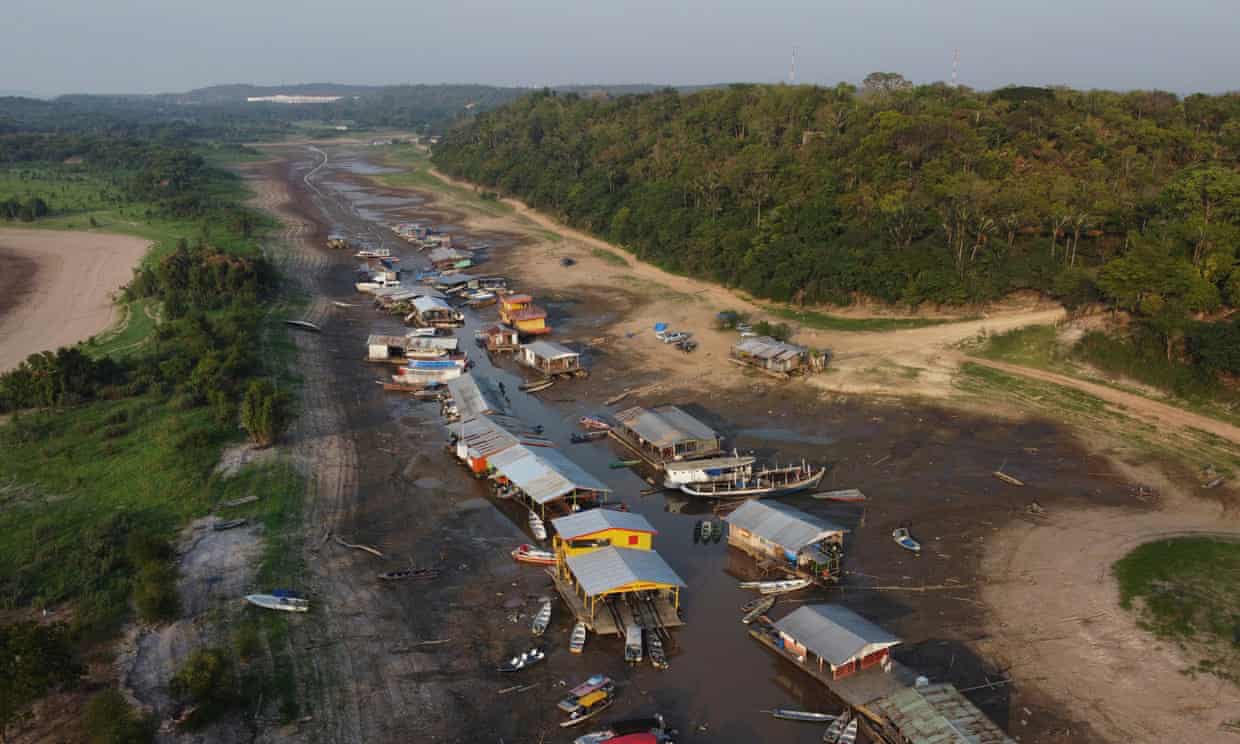
The climate crisis turned the drought that struck the Amazon rainforest in 2023 into a devastating event, a study has found.
The drought was the worst recorded in many places and hit the maximum “exceptional” level on the scientific scale.
It also showed the drought was made 30 times more likely to happen by global heating. The return of the natural El Niño climate phenomenon is associated with drier conditions but played only a small role, the scientists said.
Millions of people in the Amazon have been affected by the drought, with some rivers at their lowest levels for more than a century. There have been drinking water shortages, failed crops and power cuts, as hydroelectric plants dried up. The drought also worsened wildfires and high water temperatures were linked to a mass mortality of river life, including the deaths of more than 150 endangered pink river dolphins in a single week.
The extreme drought of 2023 would be expected about once every 50 years in today’s climate, the analysis estimated. But if global heating reaches 2˚C, such a severe drought would be expected every 13 years.
The scientists said the large-scale destruction of the rainforest for beef and soy production in recent decades had worsened the drought because the clearing of the vegetation means the land retains less water.
Recent data shows that the Amazon rainforest is approaching a tipping point, after which the rainforest would be lost with profound implications for the global climate and biodiversity. More than 75% of the untouched forest has lost stability since the early 2000s, the study showed, meaning it takes longer to recover after droughts and wildfires.
Gareth Redmond-King, at the Energy and Climate Intelligence Unit in the UK, said: “The Amazon rainforest is critical to regulating our planet’s climate, but this area of South America is also critical to the UK in an even more immediate sense.”
“About half of our food imports come from climate impact hotspots, including Peru, Colombia and Brazil, which are our top suppliers of bananas, avocados, melons and other fruit, as well as soya beans for feeding British livestock,” he said. “So climate change’s devastating effects on South America’s farmers last year may well translate into gaps on our supermarket shelves and higher prices for our food.”